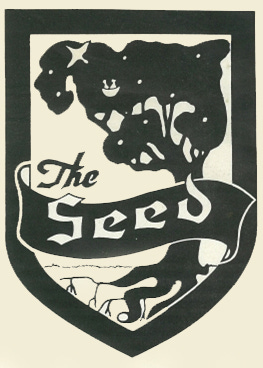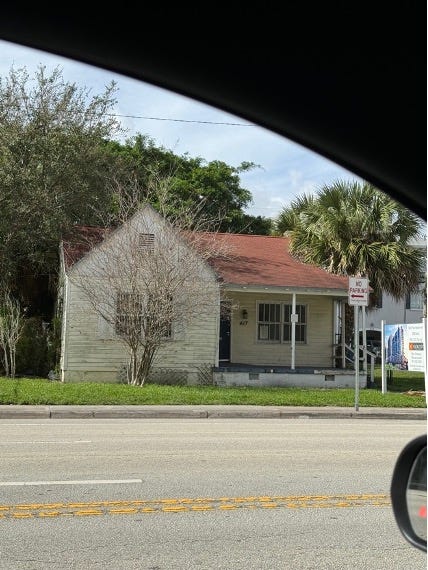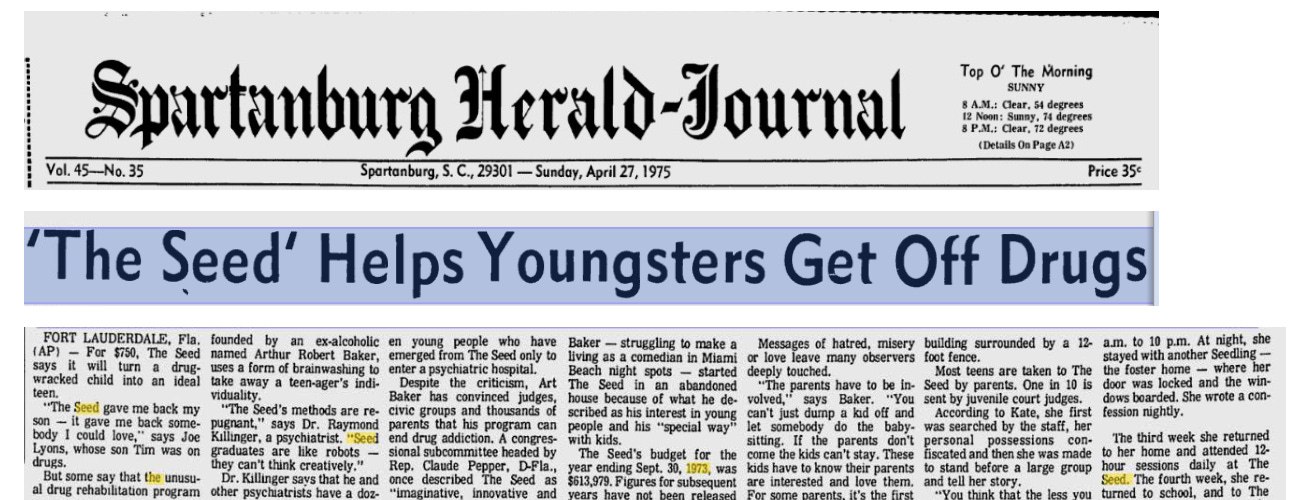A Brief History of the Seed
A Cultish Troubled Teen Center Fueled an Industry That Still Torments Thousands
The Seed Inc. and Art Barker
The Seed Inc. (1970-1993) portrayed itself as a drug rehabilitation center which used behavior modification technologies to eliminate undesired behaviors such as drug use, and thus claimed to transform adults and troubled teens into healthy citizens. According to a magazine article the program claimed to turn a “drug-crazed kid into a dream teen.” (Randolph, 1974). The Seed was founded by Art Barker, a comedian and former member of Alcoholics Anonymous.

Barker was funny, calculating and was described as “charming, energetic, often vulgar, thoroughly charismatic man” (Polonsky, 2005).
A woman who was at the Seed said Barker was, like a “vaudeville” entertainer with a “predatory presence” (Ginger, 2024).
Barker received numerous awards in the 1970s for his work on the rehabilitation of drug users; however, his combative personality was also criticized by his contemporaries. A former state official described him as a “demagogue in the role of savior” who “is hurting our children” (Killinger, 1973). His personality was both a reason for the Seed’s initial success and some of the problems it would face. Barker was able to speak to an increasing concern about teenage culture and drug abuse.
Why Was the Seed “Necessary”?
In the late 1960s Floridians were deeply concerned about an apparent increase in teenage drug use and youth culture which spurred the formation of several rehabilitation centers which sought to address this problem, including The Seed (Hardy & Cull, 1974; HPC Report, 1972).
In contrast to many of these other centers, the Seed offered a social solution which promised to prevent future undesired behavior. Their program garnered the attention of the public, regulatory agencies, and both local and federal government.
The Seed promised a plausible social solution to the increasing social and political concern about drug abuse. This center mostly treated young people who were enrolled by their parents, and secondly youngsters who were committed by the courts (Hardy & Cull, 1974). The Seed often required parents to grant custody to the Seed and sign a statement saying their child was “incorrigible.” (Randolph, 1974) Some parents committed their children with no warning. For example, when Marc Polonsky was 14 years old, he was summoned to the principal’s office during a normal school day. From there, his sister and him were escorted to a car where another set of parents sat on either side to prevent them from escaping (Polonsky, 2005). Upon arriving at The Seed they had no recourse.
In many other cases judges would commit youthful offenders to The Seed or other rehabilitative programs instead of sending them to prison. Parents and Judges sent troubled young people who had either acted improperly or who were deemed to be at risk of engaging in undesired behavior because the Seed’s program legitimately promised to transform them into healthy citizens.
Today the Seed, Tomorrow the World
The Seed claimed it was special and that its focus was to save young people.
Barker said he wanted to help troubled youth “become respected members of their community, discover they can love themselves, love others, love family, love God, and love their Country.” (Anon, 1974)
There was no doubt the program was tough, and even an overly critical parent during a 1972 Grand Jury investigation said that the program was worthwhile because “lovingly helping [troubled teens] to again enter the human race is indescribably better than burying them,” even if there was a risk of some individuals becoming “unwound.” (GrandJury, 1972) This parent described the program as “lovingly” even after strongly criticizing it and having his own child suffer greatly while enrolled at the Seed. The allure of this program was so entrenched that even strongly critical parents and other professionals still praised some of its practices. In short, this demonstrates that the kinds of interventions the Seed used were seen as legitimate and potentially impactful.
Barker argued the Seed’s approach was unique and special, despite many of the interventions employed having been previously wielded, with alleged success, in different contexts. Some of these technologies were commonly used in Communist reeducation camps and were seen as effective and powerful. The Seed’s use of RAP sessions, foster homes, staffing the center with former addicts were all fundamental to their program being “spectacularly successful.” (Anon, 1974) Further, the Seed employed “sleep deprivation, highly restricted access to the bathroom, the disallowing of even a moment’s private thought,” to enable attitudinal modification (Polonsky, 2005). Barker claimed that the Seed program would transform people, and eventually transform the world. This grandiose project and the belief that they would change the world is one of several aspects in which an analogy can be drawn to cults.
The Seed claimed success rates of around 90% and that it was the only program that could help druggies (Barker, 1973; Polonsky, 2005). This would have been spectacularly successful; nevertheless, investigations in the early 1970s would suggest their success rate was much lower. Thus questioning their claim that almost all their graduates became “respected members of their community.” (Randolph, 1974) State investigations claimed their cure rate was closer to 41% which was similar to other centers (Randolph, 1974). However, the Seed continued to claim their program worked for about 90% of Seedlings. A Seedling was the term that the Seed used to refer to people enrolled in their program. The fact that many believed their program worked for most Seedlings shows just how pervasive belief in these technologies was.
The Seed Gained Legitimacy
The use of legitimized powerful tools to modify behavior empowered the Seed to make bold claims about its program. The Seed alleged that it was the best and most successful drug rehabilitation program in the world. Many people with direct experience of the Seed were convinced, Sharon Good, whose brother was enrolled at the Seed, wrote a letter to the Governor where she lauded this “wonderful program” which was the “biggest and most successful solution” to the drug problem (Good, 1973). Likewise, Marilyn Fitzgibbons, who had three children graduate from the Seed said it was the “only drug rehabilitation program that works” (Fitzgibbons, 1974). An advertisement claimed this program was “the MOST SUCCESSFUL, The LARGEST, and the MOST ECONOMICAL” in the world (Anon, 1974).
Likewise official State reports found several positive aspects about the program. A few specialists visited the Seed, one of which described the program as “innovative”, and some others raved about the Seed’s program and its successes. The center was even supported with federal funds and received 177,000 USD from the National Institutes of Health and Medicine (1,322,554 in 2024 USD) as well 35,000 from LEAA (261,522 in 2024 USD) (HPC, 1972). The granting of Federal funds supports the view that their project was seen as legitimate, promising, and potentially effective by professionals. Some of the most prestigious funding agencies in the country evaluated proposals and decided to provide funds for the Seed’s. In short, the Seed’s program was judged to be viable. The legitimacy provided by federal funding and positive professional reviews allowed the Seed to claim its program was preventative and necessary.
The Seed aimed to increase enrollment in their program because they argued that it could not only transform troubled teens into healthy citizens, but also act as a prophylactic. Initially, they sought to rehabilitate drug users; the Seed sustained that once a person had tried drugs, they were and would forever be a druggie (Polonsky, 2005). The Seed portrayed newcomers’ hobbies and actions as efforts to appear cool. A single puff, the Seed insisted, could drive someone to “death, prison, or insanity”(Polonsky, 2005). This center insisted such people, in the absence of their program, would be unsalvageable (Polonsky, 2005). For them, recruitment was essential in preventing undesirable behaviors and they identified certain traits which they claimed were related to drug abuse. In one instance, a teen named Pat was enrolled at the Seed after his parents were convinced by neighbors and Seed staff that he abused drugs. Pat’s parents were told that “druggies listen to Alice Cooper and don’t want to mow the lawn” (Randolph, 1974). Having certain posters on the wall and refusing chores suddenly were symptoms of deeper problems. Families at the Seed were encouraged to recruit other clients. The Seed asked parents of current clients to enroll the rest of their children.

The Seed program, they claimed, was not only the best but also incredibly cost effective (Anon, 1974). Sometime around 1972 and early 1973 the Seed had 972 Seedlings enrolled in its program (Barker, 1973). By 1974, over five thousand people had been through the Seed’s program (Randolph, 1974). At first sight, this program may seem to be a scheme to get money; however, the Seed only charged 150 US dollars per child (1,120 in 2024 dollars). Governmental reports would dispute the alleged cost per Seedling because it excluded donations and other work provided by families. We explore the program in detail in a future newsletter.
Conclusions
The Seed is an instance of the porosity between scientific laboratories and the world which also showcases one way in which prevention science was put into action. The legitimacy provided by science and medicine made these interventions appealing. There were other reasons why such interventions appeared plausible. The Seed has much deeper roots than Synanon, and its program was, at the time, perceived to be an excellent one. Stay tuned to learn about the Seed’s program.
We are interested in speaking to other Seedlings. If you were at the Seed and are willing to have a conversation about your experiences please email us at: curingcrime@icloud.com
Christian wrote his masters project on The Seed for his ALM degree at Harvard Extension. This work draws heavily from that project.









This is incredibly interesting. Looking forward to learning more.
Fascinating stuff, guys! This is something I've never heard about before, so thank you for bringing it to my attention.